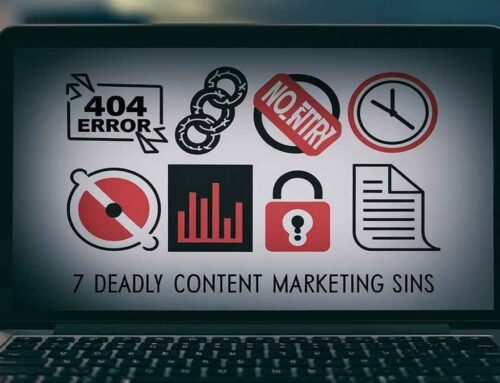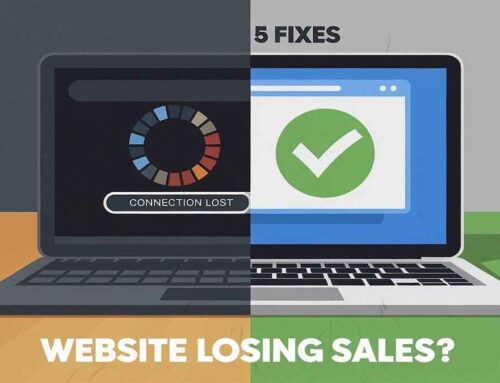
Mastering the Art of Strategic Marketing
Do you want your business to rise above the competition, capture your audience’s attention and leave a lasting impact? Mastering the art of strategic marketing is the answer. Strategic marketing isn’t just about promoting products or services; it’s about understanding the market, tailoring your approach and creating a plan that’s uniquely designed to reach your goals.
To dominate the market, you need more than luck, you need a finely-tuned marketing strategy that aligns with your business objectives and resonates with your audience.
Whether you’re a seasoned marketer or a newcomer looking to make your mark, this guide will take you through proven methods to harness the power of strategic marketing.
Get ready to explore the fundamentals of marketing strategy, develop techniques to captivate your audience and position yourself to dominate your market.
1. Define Your Goals and Objectives
What does success look like for your business? Before diving into the details of strategic marketing, it’s essential to set clear goals. Start with the big picture: do you want to increase brand awareness, boost customer acquisition or drive long-term loyalty? Having a clear goal directs every subsequent decision and ensures you don’t lose focus.
Some common goals for strategic marketing include:
- Increasing brand awareness: Getting your name out there and establishing a strong presence.
- Lead generation: Attracting potential customers who show interest in your product.
- Customer retention: Developing loyalty among existing customers.
Your goals will act as the compass for your marketing strategy, helping you stay on track as you take on the complexities of market domination.
2. Understand Your Target Market
The art of strategic marketing begins with a deep understanding of your target market. Who are your ideal customers and what are their preferences, challenges and needs? Knowing these details allows you to create marketing messages that resonate and stand out in a crowded marketplace.
- Customer personas: Develop profiles of your ideal customers. Include demographic information, interests, pain points and motivations.
- Market research: Use surveys, interviews and market analysis tools to gain insights into customer behavior. Tools like Google Analytics, social media insights and market research reports can be valuable resources.
- Competitive analysis: Understand what your competitors are doing. Identify gaps in their strategies where you can offer something better or different.
By truly understanding your audience, you can tailor your marketing strategy to meet their needs and position yourself as the best choice.
3. Craft a Unique Value Proposition
In a competitive market, why should customers choose you? Your unique value proposition (UVP) is the answer. It’s the essence of what sets you apart and why customers should trust your brand over others. A compelling UVP is specific, addresses customer pain points and clearly communicates the benefits of your product or service.
To create an effective UVP, answer these questions:
- What problem does your product solve?
- How does it improve your customers’ lives?
- Why is it different or better than similar offerings?
Feature your UVP prominently on your website, social media and advertising to ensure it’s seen by potential customers. A well-defined UVP helps build brand loyalty and establishes a distinct place in the market.
4. Develop a Multi-Channel Marketing Strategy
In today’s digital world, your customers are everywhere, social media, email, search engines and even offline. A multi-channel marketing strategy allows you to reach them wherever they are, increasing the likelihood of engagement and conversions.
Here’s how to approach a multi-channel marketing strategy:
- Content marketing: Share valuable content through blog posts, videos and guides that educate and engage your audience.
- Social media marketing: Engage with customers on platforms where they’re most active. Tailor your approach for each platform to ensure it resonates.
- Email marketing: Develop personalized email campaigns that nurture leads and drive sales.
- SEO and paid search: Use search engine optimization (SEO) to increase organic visibility and pay-per-click (PPC) ads to reach targeted audiences.
By maintaining a consistent presence across multiple channels, you can build stronger customer relationships, enhance brand recognition and ultimately, dominate your market.
5. Leverage Data-Driven Decision Making
The most successful marketing strategies are built on data. By leveraging analytics, you can understand what works and what doesn’t, allowing you to make informed adjustments that drive results.
- Track KPIs: Identify key performance indicators (KPIs) that align with your goals. For example, track metrics like conversion rate, customer acquisition cost and customer lifetime value.
- Use analytics tools: Platforms like Google Analytics, social media insights and CRM software provide valuable data on customer behavior.
- Test and optimize: Use A/B testing to determine which elements of your marketing are most effective. Test variables like ad copy, email subject lines and landing page designs.
With data-driven insights, you can refine your marketing strategy over time, ensuring it remains effective and relevant.
6. Create Compelling Content
Content is a crucial element of strategic marketing. Your content should inform, entertain or solve a problem for your audience. Effective content positions your brand as an authority, making customers more likely to trust and engage with you.
- Blogging: Share articles on topics relevant to your audience. Blogging improves your SEO, drives organic traffic and establishes authority in your industry.
- Video content: Video is highly engaging and can boost conversions. Share product demonstrations, behind-the-scenes videos or customer testimonials.
- Social media posts: Create shareable content that connects with your audience on platforms like Instagram, LinkedIn and Twitter.
Good content not only attracts and engages customers but also helps you build a reputation as an industry leader.
7. Emphasize Customer Experience
Want to dominate the market? Prioritize the customer experience. In a world where customers have endless options, an exceptional experience can make all the difference. When customers have positive interactions with your brand, they’re more likely to become loyal advocates.
- Personalization: Tailor your messages, recommendations and offers to individual customers. Personalization can significantly improve engagement and conversions.
- Fast response times: Whether on social media, email or customer service calls, quick responses show that you value your customers.
- Continuous improvement: Regularly gather feedback and make changes to improve the customer experience.
Happy customers lead to repeat business and positive word-of-mouth, both of which are invaluable for market dominance.
8. Build Strong Partnerships and Collaborations
Collaborations can extend your reach, bring in new customers and enhance credibility. Strategic partnerships with brands that complement yours (rather than compete) can benefit both parties.
Examples of strategic collaborations include:
- Influencer marketing: Partner with influencers in your industry to promote your products to their audience.
- Affiliate marketing: Collaborate with affiliates who can promote your product to a larger audience in exchange for a commission.
- Cross-promotions: Work with businesses that offer complementary services to promote each other’s offerings.
By collaborating with the right partners, you can increase your visibility and credibility, helping you capture more of the market.
9. Use Automation to Streamline Processes
Marketing automation can save you time and ensure that your strategy runs smoothly. From email campaigns to social media scheduling, automation allows you to focus on high-impact activities while maintaining consistency.
- Email automation: Set up drip campaigns, abandoned cart reminders and personalized offers.
- CRM automation: Use customer relationship management (CRM) software to track interactions, manage leads and streamline follow-ups.
- Social media scheduling: Use tools like Hootsuite or Buffer to plan and schedule posts in advance.
Automation keeps your strategy on track, freeing you to focus on creativity and engagement.
10. Continuously Evaluate and Adapt
Market dynamics, customer preferences and technology change frequently. To stay ahead, continually assess and adjust your strategy. Flexibility and responsiveness are critical to maintaining relevance and staying competitive.
- Quarterly reviews: Regularly assess your KPIs and review the performance of your marketing initiatives.
- Feedback loops: Use customer feedback to understand areas where your strategy can improve.
- Stay informed on trends: Keep up with industry news and trends to ensure your strategy is up-to-date.
By embracing change and being willing to adapt, you’ll keep your brand relevant, competitive and primed to dominate the market.
Conclusion
Mastering the art of strategic marketing requires a combination of planning, adaptability and a deep understanding of your market.
With a well-crafted marketing strategy, a unique value proposition and a multi-channel approach, you’ll be well-equipped to capture your audience’s attention, build strong customer relationships and drive growth.
To dominate the market, remember that strategic marketing is an ongoing process. As you refine your approach and continue to innovate, you’ll see your efforts pay off in sustained growth and market leadership.
Now is the time to apply these strategies and transform your business. Take the steps toward mastering the art of strategic marketing and position yourself to achieve lasting success.














